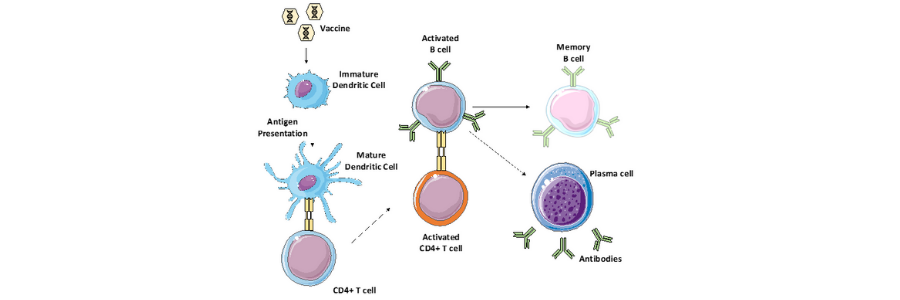Gene Therapy Vaccines: Are They Worth a Shot?
Eoghan J. Mulholland, Ph.D. - August 03, 2020
To recognize National Immunization Awareness Month this August, Dr. Eoghan Mulholland discusses the importance of vaccines and how gene therapy can be used to prevent disease.

August sees in National Immunization Awareness Month. Perhaps now more than ever, the world is acutely aware of the power and benefits that vaccination can have, as the race for a COVID-19 vaccine continues. The first successful vaccine was introduced more than 200 years ago. In 1796, Edward Jenner developed a vaccine for smallpox after observing that milkmaids who had previously contracted cowpox did not catch smallpox. Now in 2020, there are a range of diseases which can be vaccinated against, from the flu to mumps, and vaccines are estimated to save as many as 3 million lives each year. With gene therapy technology rapidly evolving and gaining a well-earned spot in modern clinical medicine, how can it be used in the prevention of disease?
What are vaccines and how do they work?
Vaccination is the process of training your body’s immune system to fight off diseases that it hasn’t previously come into contact with. To comprehend how vaccines work, it is important to understand the underlaying cellular biology. A vaccine typically delivers an antigen (derived from the disease we want to vaccinate against) into the body to simulate infection and stimulate an immune response. When an antigen is detected, dendritic cells have the job of processing and transporting the antigens to the lymph nodes. At the lymph nodes the antigens are presented to specialized T cells, activating them. These activated T cells can then go on to stimulate B cells, which in turn produce antibody secreting plasma cells and memory B cells. Thus, your body is now equipped with the tools to fight that specific disease if you were to come up against it in the future.
The statistics
Vaccination is an efficient tool that not only saves lives and is cost effective, but is also paving the way for the eradication of certain diseases. It is estimated that >1 billion children have been vaccinated over the last decade, and the benefits are clearly palpable. Between 2000 and 2018 mortality from measles decreased by approximately 73% globally, averting some 23.2 million deaths. Furthermore, as of July 2019, all but 12 countries have eliminated maternal and neonatal tetanus, a nasty bacterial disease with a fatality rate between 70% and 100% in newborns. Evidently, vaccines are extremely powerful tools and have benefits for all.
Gene therapy and vaccination
The concept of using gene therapy for vaccination is very promising. By delivering genetic materials which encode for an antigen of interest, an immunological response can be stimulated. This method of vaccination has several advantages compared to that of traditional antigen delivery (e.g. killed viral particles or live-weakened microorganisms) such as enhanced safety. Indeed, vaccines have been proven to be extremely safe as they stand, however, there is a minute chance of inactivated pathogens returning to virulence which could lead to infection, particularly in immunocompromised individuals.
Another advantage of a gene therapy vaccine is versatility. These vaccines could be used to treat cancer malignancies or genetic disorders, in addition to the prevention of infectious diseases. Research exploring the use of DNA vaccines for cancer therapy has been extremely promising to date. The concept behind this is that DNA encoding for tumor-associated antigens can be delivered as a vaccine to induce an immune response against cancer cells which express said antigen. In a paper by Cole et al. published in Acta Biomaterialia (2019), researchers evaluated delivery of plasmid DNA coding for Prostate Stem Cell Antigen (mPSCA) using the RALA peptide to form cationic nanoparticles. The nanoparticles were loaded into a microneedle patch, which allowed for easy and pain-free delivery of the nanoparticles to the skin, while the RALA peptide greatly enhanced the cellular uptake of the plasmid. The authors found that application of this patch resulted in local mPSCA expression in vivo and elicited a tumour specific immune response. The paper can be found here.
With the great potential of gene therapy vaccines, it is unsurprising that the research world is turning to that potential with hope as the world is ravaged by COVID-19. I spoke with Ebony Gary, Ph.D., a Post-Doctoral Research Fellow at The Vaccine and Immunotherapy Center, The Wistar Institute. Gary is part of a team working on novel DNA vaccines and treatments for cancer and emerging infectious diseases. Gary had the following to share:
"Nucleic acid or gene therapy-based immunogens, including viral vectors expressing pathogenic targets, modified messenger RNA (mRNA), and DNA-based immunogens, can be directly designed and optimized from pathogen sequences and synthesized in vitro. The flexibility and speed of these platforms supports faster preclinical testing with more rapid transition to clinical scale-up. Recent advances in synthetic nucleic acid delivery technology have brought us steps closer to this important outcome with direct implications for the development of vaccines against the newly emerged SARS-CoV-2. In support of these advances, several important nucleic acid-based vaccines are currently in clinical trials for SARS-CoV-2 prophylaxis."
This really does highlight the potential and impact that gene therapy vaccines can have. There are currently no clinically available gene therapy vaccines for human patients, however, according to www.clinicaltrials.gov there are currently 207 trials involving gene therapy vaccines. This is really encouraging, and a testament to the strong research community focused on developing these revolutionary vaccines.
Dr. Mulholland is a postdoctoral research scientist in cancer genetics at the University of Oxford and a member of the ASGCT Communications Committee.